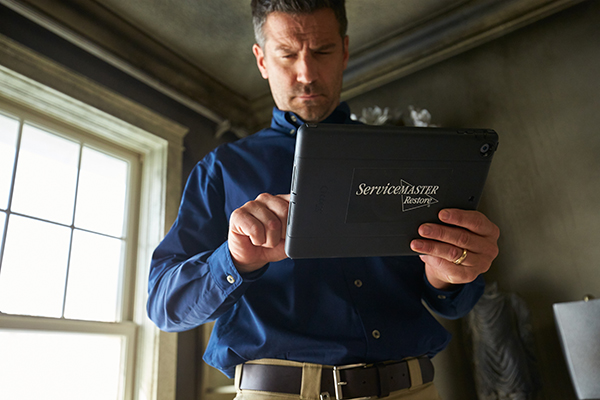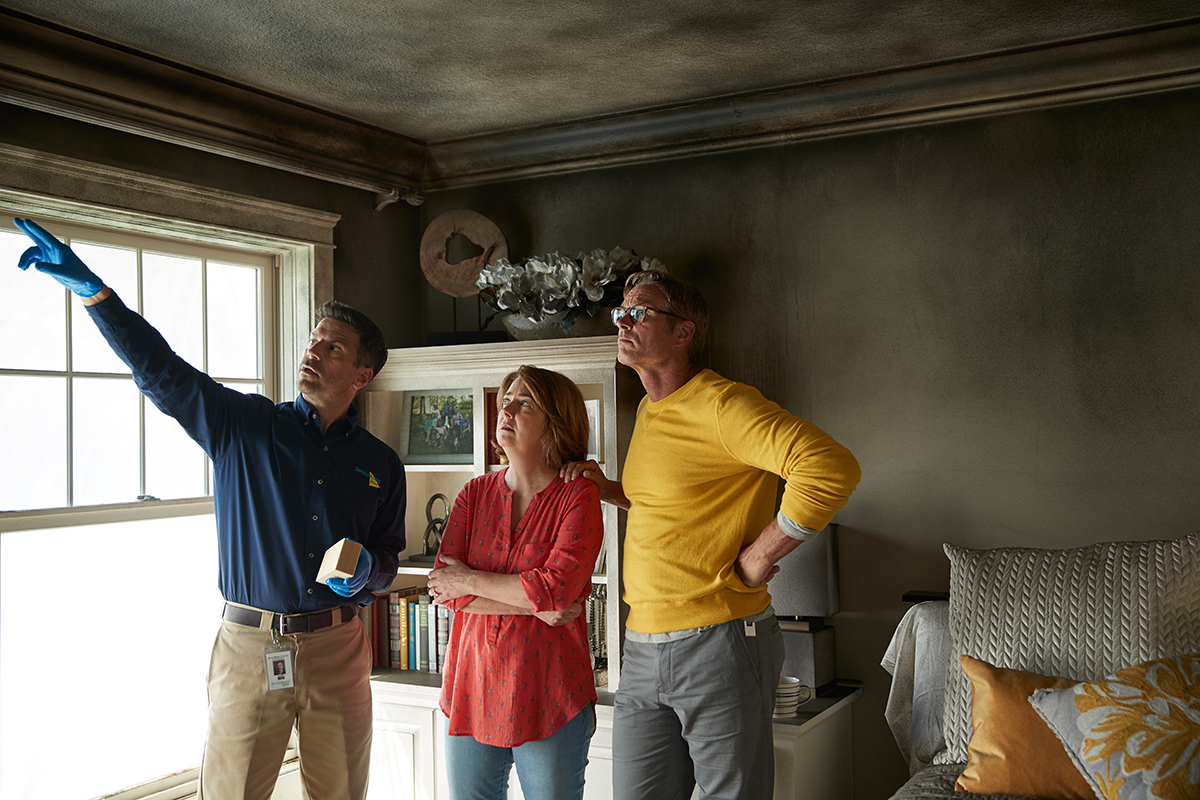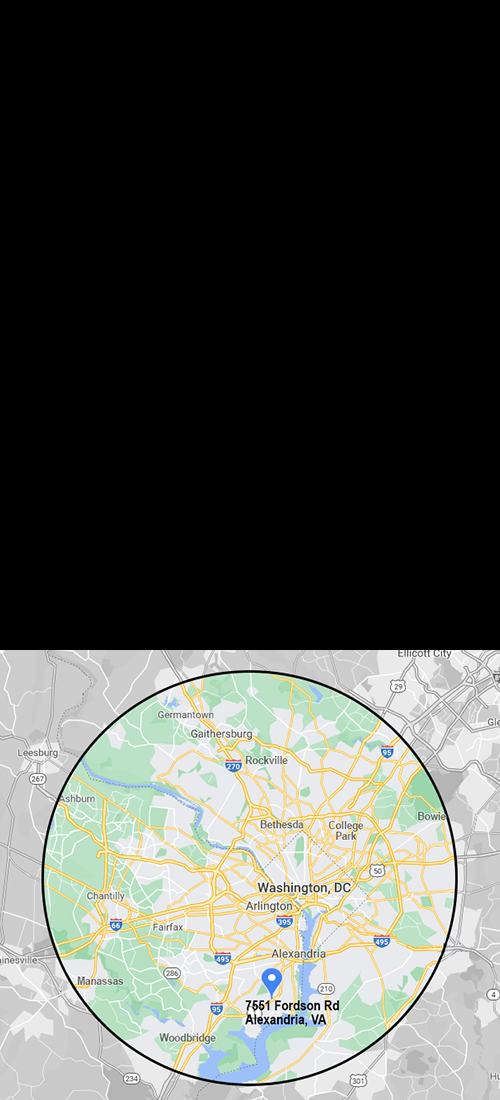A fire is a frightening experience for anyone involved, but if you think the dangers are over once the flames have been extinguished, you’re wrong. The black residue covering walls, ceilings, and furnishings is not only ugly and hard to clean, but it’s a health hazard.
Identifying Soot
 The residue, more commonly known as soot, is what’s left when fossil fuels like wood, coal, and oil haven’t completely burned. This is why oil and chemical fires produce such thick black smoke. Many items in modern homes contain plastic and other synthetics, which are made from oil. When this fuel burns, the carbon-based materials float through the air and spread further than the original scene of the fire. Homes in tightly packed neighborhoods that are next door to a house fire often receive soot damage even if they weren’t directly affected by the fire. It can also be produced in much less dramatic fashion by a fireplace that has insufficient ventilation. Over time, creosote and other byproducts build up inside the chimney and can cause soot when the fireplace is used.
The residue, more commonly known as soot, is what’s left when fossil fuels like wood, coal, and oil haven’t completely burned. This is why oil and chemical fires produce such thick black smoke. Many items in modern homes contain plastic and other synthetics, which are made from oil. When this fuel burns, the carbon-based materials float through the air and spread further than the original scene of the fire. Homes in tightly packed neighborhoods that are next door to a house fire often receive soot damage even if they weren’t directly affected by the fire. It can also be produced in much less dramatic fashion by a fireplace that has insufficient ventilation. Over time, creosote and other byproducts build up inside the chimney and can cause soot when the fireplace is used.
Soot also has an odor that smells like smoke or burnt materials. When the soot spreads around your property after a fire, the unpleasant odor often spreads with it.
Dangers of Soot
Soot is harmful because a wide variety of natural and synthetic substances burn during a fire. As they burn, they create microscopic particles that contain chemicals, acids, dust, metals, and other hazardous substances. The soot spreads widely and sticks to every exposed surface, creating a larger contamination area. Soot can cause serious damage to the surfaces it sticks to, and this damage can quickly become permanent. If it reaches the building’s HVAC system, it can spread even further through the structure.
Unless the soot is cleaned quickly and correctly, the particles will be inhaled, causing bronchitis and other lung disorders, as well as aggravating current conditions like asthma or COPD. A report from the Environmental Defense Fund shows that even brief exposure to soot can cause problems. Not only are soot particles small enough to embed within lungs, some can even enter the bloodstream. Exposure to these particles has been linked to heart attacks and arrhythmias in people with heart disease. As people and animals breathe in these particles over time, the symptoms will only get worse.
Removing Soot
 It’s easy to find large deposits of soot residue on walls, ceilings and other objects, but the individual particles are too tiny to see with the naked eye. It has a distinctive smoky/ashy odor, which is often how people realize an area has been affected. It’s important to remove soot as soon as possible, both for health reasons and to restore damaged items, but it’s more important to do it correctly. That’s why using a professional soot and smoke damage restoration company is a smart idea. Cleaning soot and smoke damage on your own can be difficult because it’s easy to spread it even further; exposure to soot even after a few days will still cause lung irritation without proper protective equipment, which many people don’t own. You can’t fake it by pulling your shirt over your nose and mouth. Improper cleaning techniques can cause the soot to be even further absorbed by surfaces, ruining items that might have been saved.
It’s easy to find large deposits of soot residue on walls, ceilings and other objects, but the individual particles are too tiny to see with the naked eye. It has a distinctive smoky/ashy odor, which is often how people realize an area has been affected. It’s important to remove soot as soon as possible, both for health reasons and to restore damaged items, but it’s more important to do it correctly. That’s why using a professional soot and smoke damage restoration company is a smart idea. Cleaning soot and smoke damage on your own can be difficult because it’s easy to spread it even further; exposure to soot even after a few days will still cause lung irritation without proper protective equipment, which many people don’t own. You can’t fake it by pulling your shirt over your nose and mouth. Improper cleaning techniques can cause the soot to be even further absorbed by surfaces, ruining items that might have been saved.
If you experience a fire on your property in the Washington, DC metro area, call ServiceMaster NCR for the best fire damage restoration services available. Our highly skilled technicians can remove soot from a wide variety of surfaces, including porcelain, metal, ceramics, crystal, and much more. We use the most effective products and equipment available to the industry to safely clean these surfaces before the damage becomes permanent. It’s important to call us as soon as possible after a fire; every minute you wait gives acidic soot more time to damage your property. That’s why our experts are on call 24 hours a day, 7 days a week, because fires don’t make appointments.
Soot and smoke damage restoration costs vary, depending on the extent of the damage.













